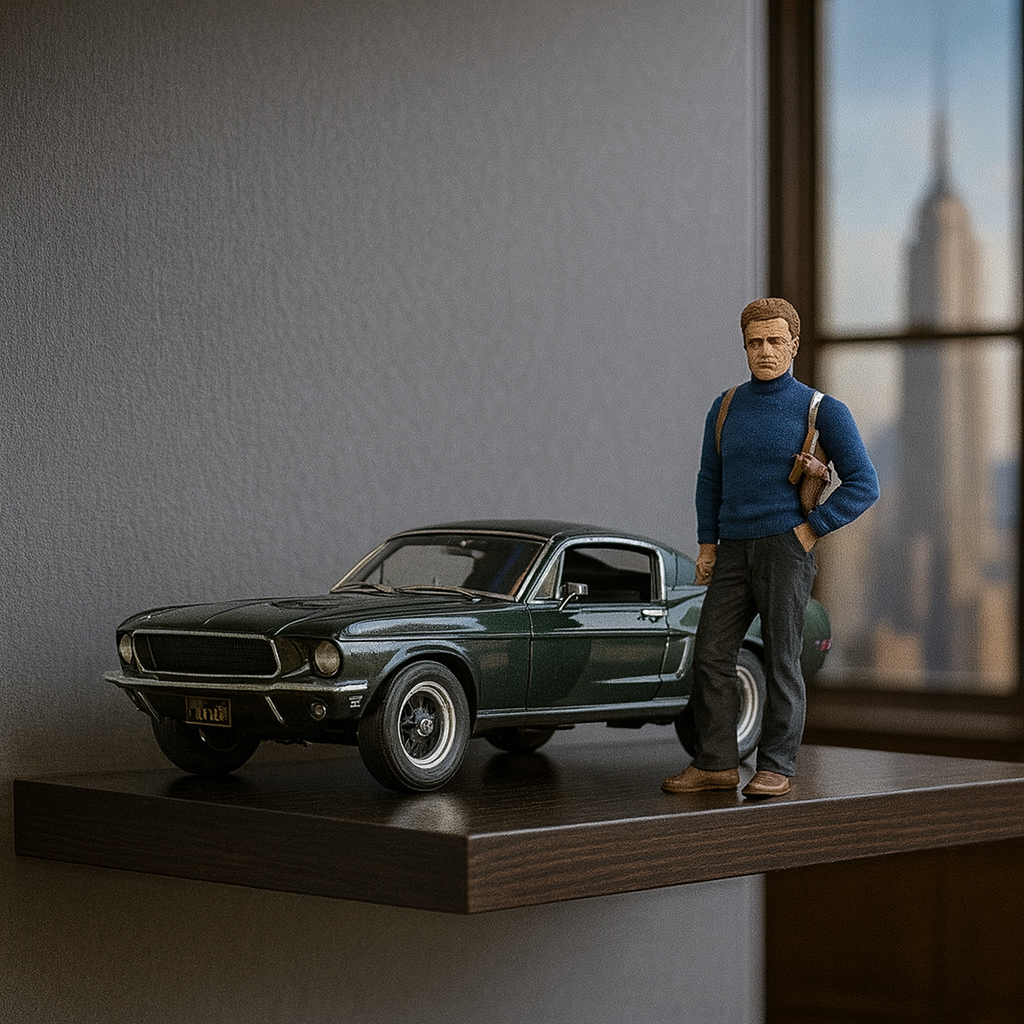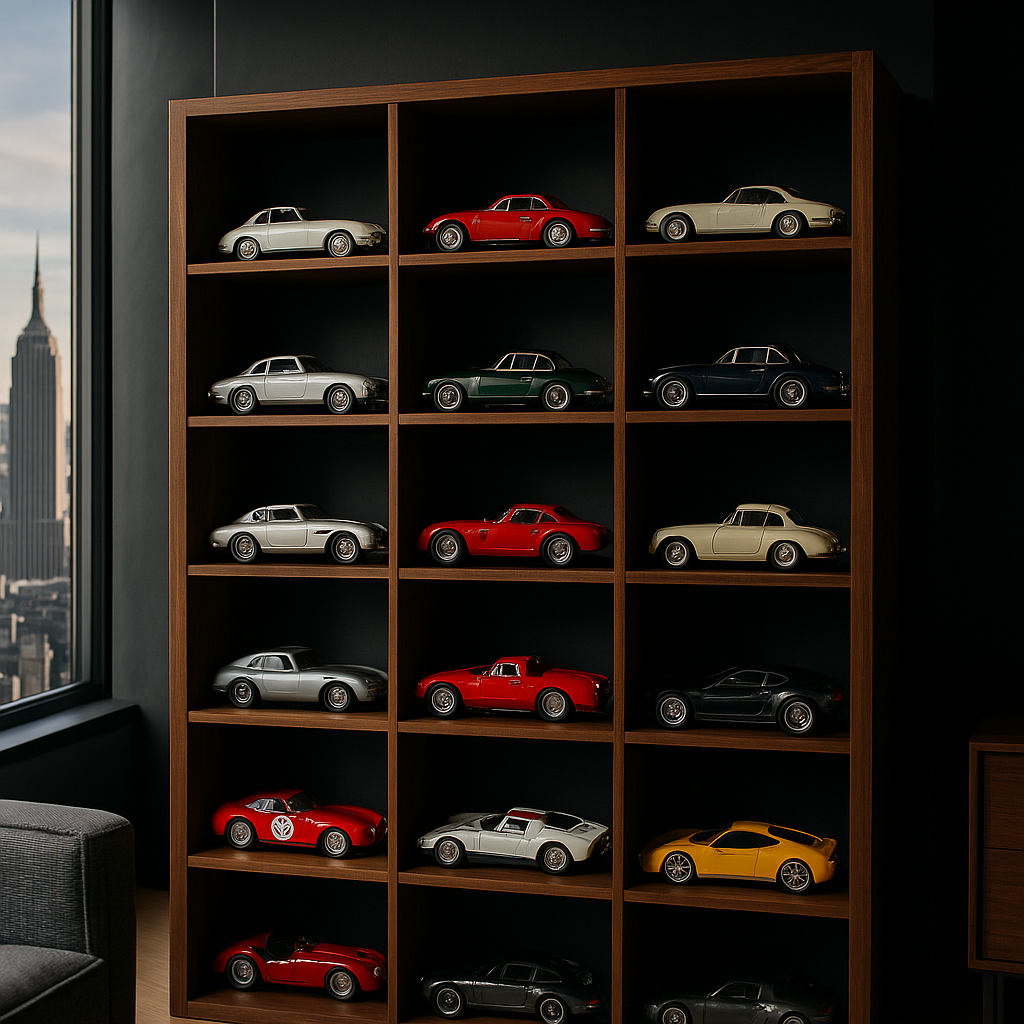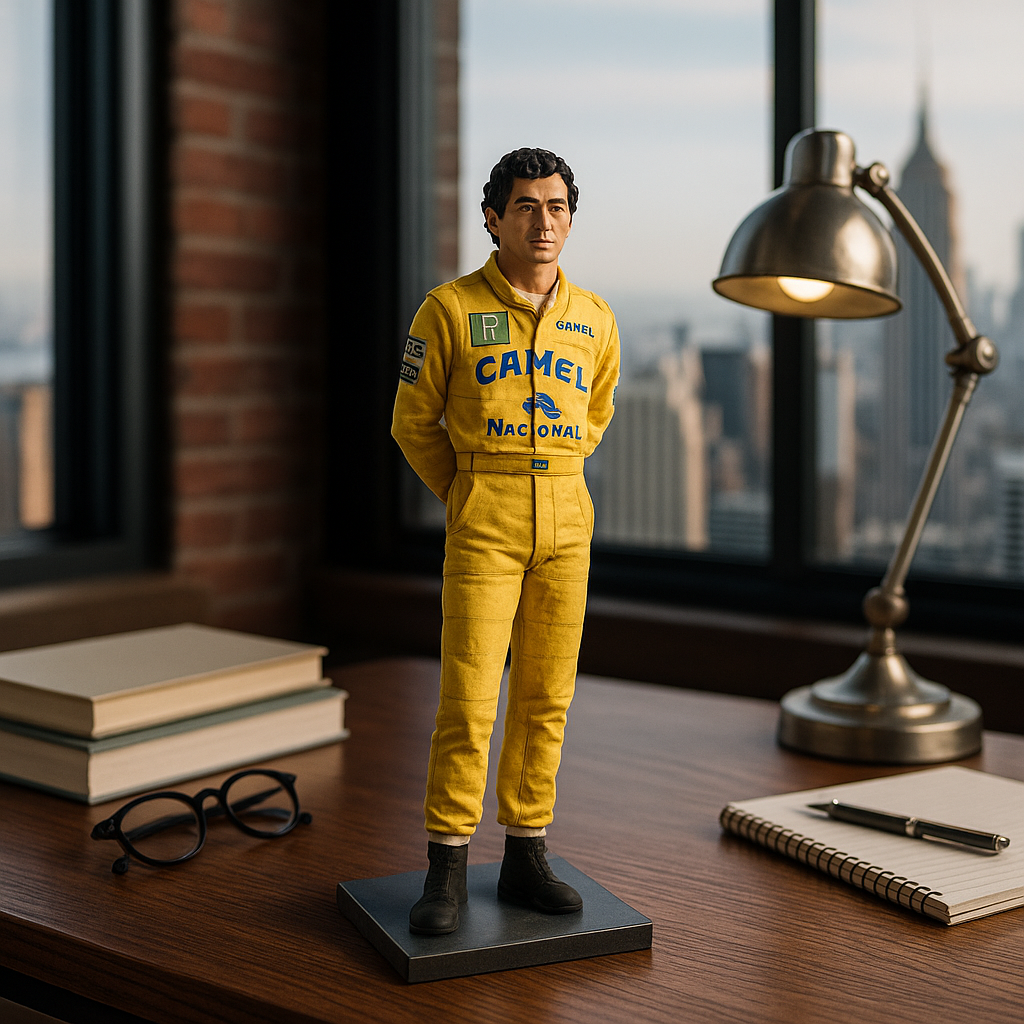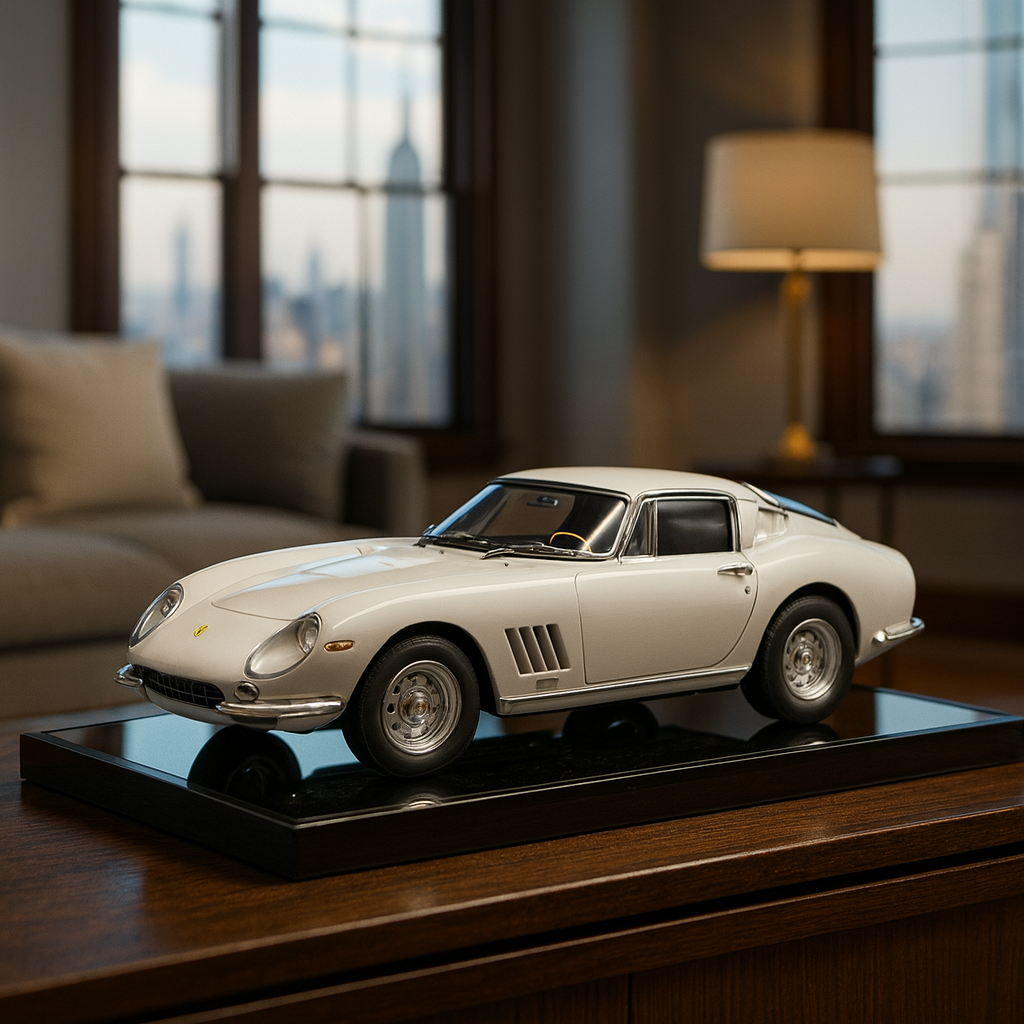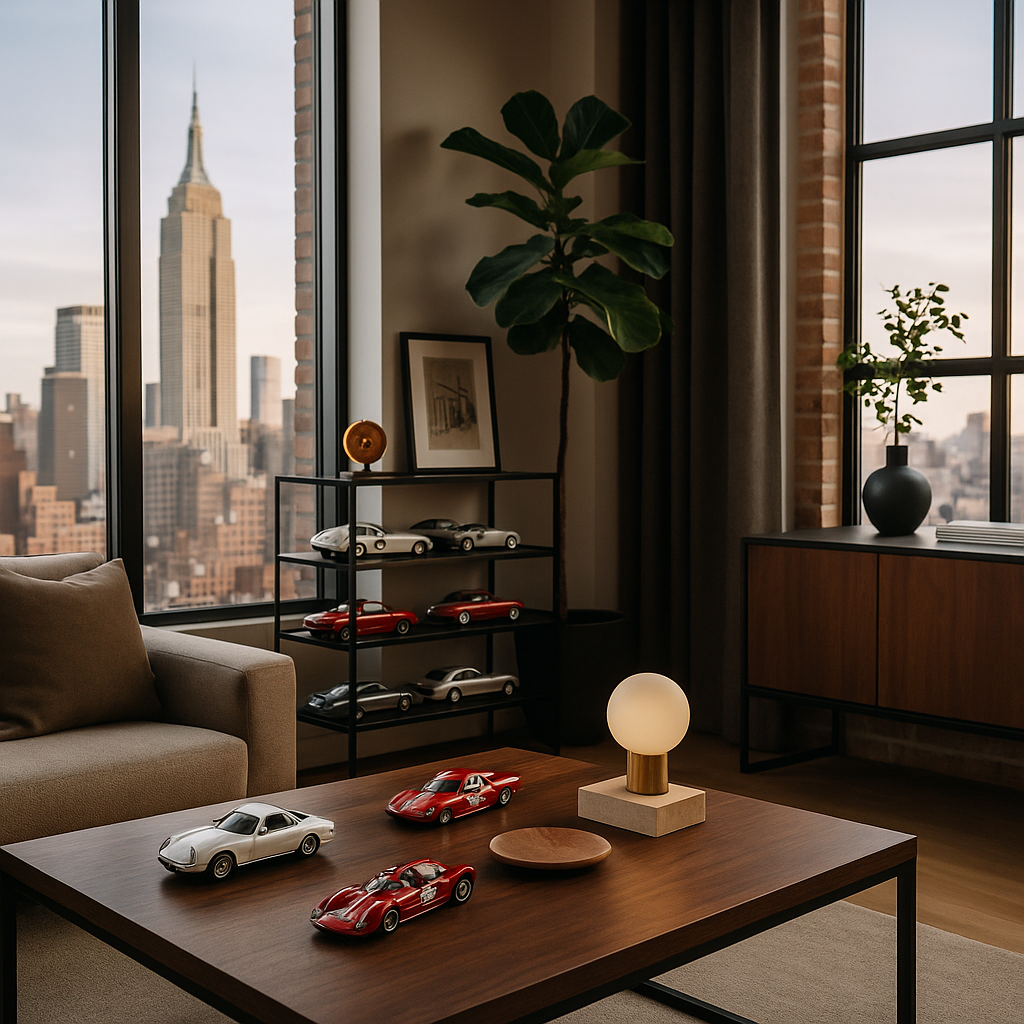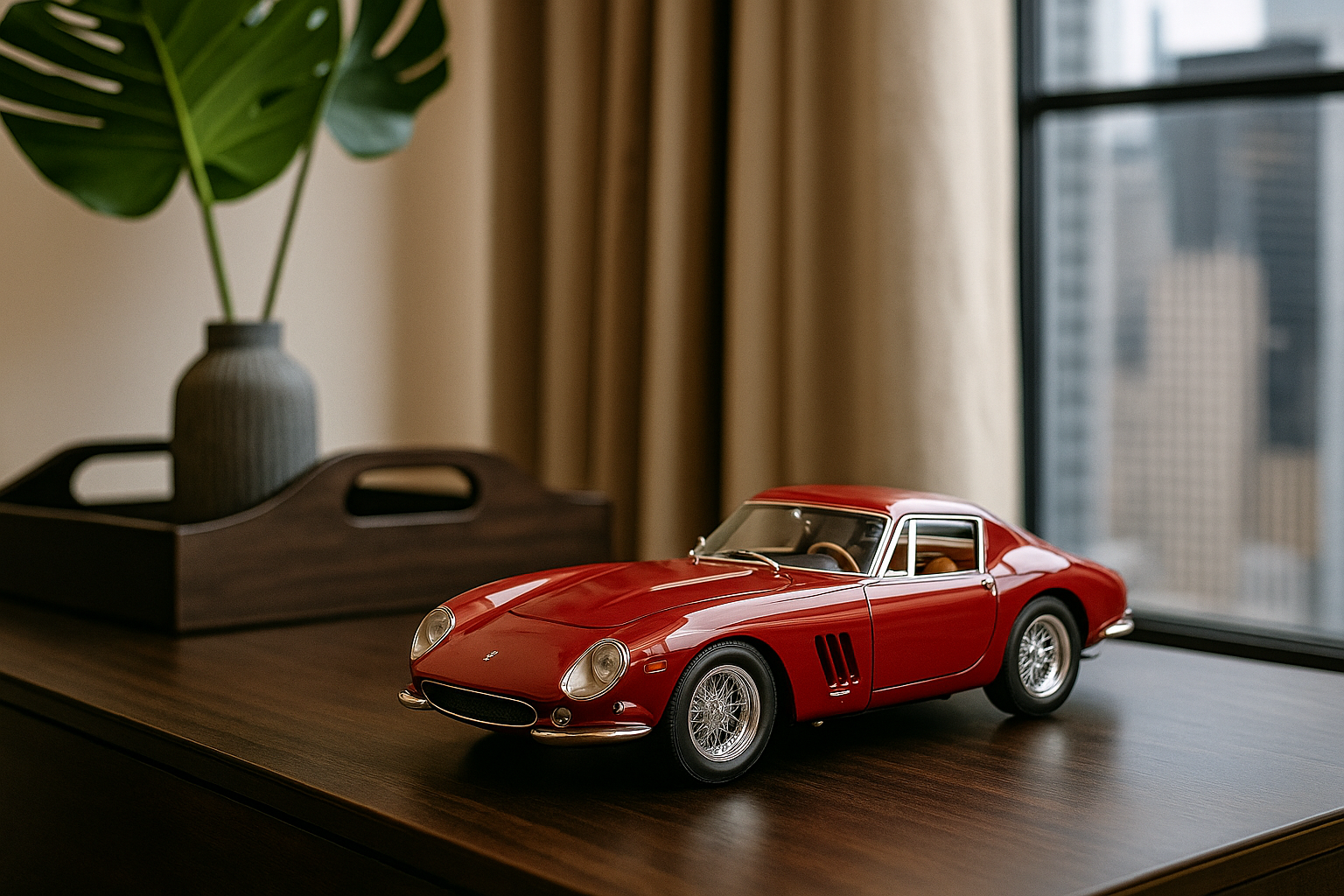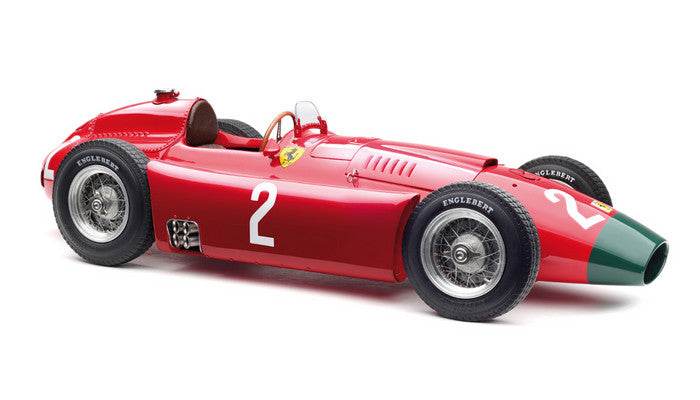
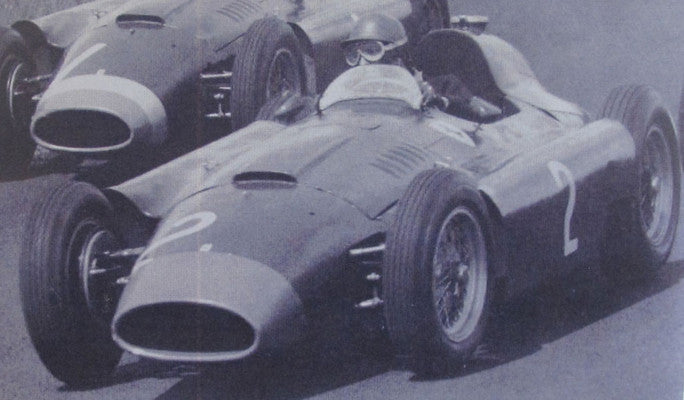
1:18 Ferrari D50 Long Nose #2 Collins GP Germany CMC M-185 LE 1.000 -pre-owned-
Der Verkauf unterliegt der Differenzbesteuerung gem. § 25a UStG (Gebrauchtgegenstände/Sonderregelung). Ein gesonderter Ausweis der Umsatzsteuer für gebrauchte oder wiederaufbereitete Gegenstände ist nicht zulässig.
Description
After a one-year break in 1955 due to the tragedy of the accident at the 24 Hours of Le Mans, the German Grand Prix took place on August 5, 1956, at the Nürburgring and was also the seventh of a total of eight races in the 1956 Automobile World Championship.
At this point, British racing driver Peter Collins led the drivers' standings by one point over Juan Manuel Fangio, both under contract with Scuderia Ferrari, and by four points over Jean Behra, who was racing for Maserati. All three therefore still had a good chance of winning the Drivers' World Championship. Stirling Moss, another title contender, was already well behind at this point, meaning he could only hope for a title chance if his rivals were held back by retirements.
In the race itself, the Italian teams Ferrari and Maserati set the tone and were among the most promising candidates for victory. Along with Fangio and Collins, Ferrari fielded Eugenio Castellotti, Luigi Musso, and Alfredo de Portago. Maserati's star drivers, Stirling Moss and Jean Behra, were considered the most likely to win. The other drivers, Cesare Perdisa and Paco Godia, rounded out the Maserati racing team. The French racing team Gordini entered two cars as the third competitor. The Scuderia Centro Sud team, with a Maserati 250 F and a Ferrari 500, along with six other drivers with private cars, rounded out the field.
Due to Ascari's fatal accident shortly after the 1955 Monaco GP and the accompanying financial difficulties, the Lancia racing team, along with all its vehicles, inventory, and development expertise, was acquired by Ferrari in 1955. Ferrari immediately began to fundamentally redesign the Lancia vehicles and implemented numerous new innovations. Thus, a new era began for Ferrari in 1956.
At the German Grand Prix, the further developed cars were consistently used under the designation Lancia/Ferrari D50 (later the shortened name Ferrari D50 was predominantly used).
Ferrari's star driver Juan Manuel Fangio competed in a car equipped with a long nose. Racing team threat Peter Collins also entered the race with the same car configuration.
The long nose gave the cars a distinctive appearance with streamlined bodywork. A blue and yellow stripe on the nose tip helped make Fangio's car easier to spot during the race.
Collins' car had a green stripe on the tip of its nose to distinguish it.
As expected, Fangio, wearing starting number 1 and bearing the registration inscription MO 36 on the rear left side, achieved pole position with a time of 9:51.2 minutes, ahead of his teammate Collins. The two world championship contenders, Fangio and Collins, were separated by just three-tenths of a second. Castellotti took third place on the grid, three seconds behind. Maserati driver Stirling Moss qualified in fourth, another ten seconds behind the Ferraris.
The race, which consisted of 22 laps of 22.81 km each and a total distance of 501.82 km, began promisingly for Ferrari. Collins had already taken the lead before the first corner. However, he was overtaken by Fangio on the very first lap, who moved to the front of the field and held on to this lead until the end of the race. During the race, Fangio and Collins repeatedly improved the 17-year-old track record, which Fangio then improved to a new record time of 9:41.6 minutes. Unfortunately, Collins crashed during the race due to a driving error and was forced to retire. In the end, only seven drivers finished the race. Fangio won comfortably with a 45-second lead over Stirling Moss, who crossed the finish line in second place, a few seconds ahead of Maserati driver Behra.
The clear winner of this race was Juan Manuel Fangio, who claimed pole position, the win, and the fastest lap. In the Drivers' Championship, J.M. Fangio reclaimed the lead and entered the season finale, the remaining Italian GP in Monza, with an eight-point advantage.
Model description:
- Metal precision model made of 1161 parts, hand-assembled.
- Removable and lockable hood
- Movable ventilation flap for the driver's footwell
- True to the original replica of the 8-cylinder 90°V engine with all
- Add-on units and complete cable laying/cabling
- Exhaust pipes as side pipes in metal design
- Metal wishbone front axle with shock absorbers and transverse leaf spring
- DeDion metal rear axle with tension struts and shock absorbers and transverse leaf spring
- Handcrafted stainless steel grille
- Tubular oil cooler in front of the water cooler
- Detailed replica of the cooling system as well as the oil and fuel lines
- Movable tank caps, movable oil filler cap
- Cockpit with leather-covered driver's seat and headrest
- Perfectly designed spoked wheels with hand-drawn and nippled stainless steel wire spokes mounted on aluminum rims
- Original central locking devices with right/left thread
- Brilliant paintwork in original color
- Start numbers applied using a complex pad printing process
Special accessory: Battery starter trolley with separate external starter
CMC Legal Disclaimer
The use of racing team and/or driver names, symbols, starting numbers, and/or descriptions is solely for reference purposes. Unless otherwise stated, it does not imply that the CMC scale model is a product of any of these racing teams/drivers or endorsed by any of them.
Notice
After a one-year break in 1955 due to the tragedy of the accident at the 24 Hours of Le Mans, the German Grand Prix took place on August 5, 1956, at the Nürburgring and was also the seventh of a total of eight races in the 1956 Automobile World Championship.
At this point, British racing driver Peter Collins led the drivers' standings by one point over Juan Manuel Fangio, both under contract with Scuderia Ferrari, and by four points over Jean Behra, who was racing for Maserati. All three therefore still had a good chance of winning the Drivers' World Championship. Stirling Moss, another title contender, was already well behind at this point, meaning he could only hope for a title chance if his rivals were held back by retirements.
In the race itself, the Italian teams Ferrari and Maserati set the tone and were among the most promising candidates for victory. Along with Fangio and Collins, Ferrari fielded Eugenio Castellotti, Luigi Musso, and Alfredo de Portago. Maserati's star drivers, Stirling Moss and Jean Behra, were considered the most likely to win. The other drivers, Cesare Perdisa and Paco Godia, rounded out the Maserati racing team. The French racing team Gordini entered two cars as the third competitor. The Scuderia Centro Sud team, with a Maserati 250 F and a Ferrari 500, along with six other drivers with private cars, rounded out the field.
Due to Ascari's fatal accident shortly after the 1955 Monaco GP and the accompanying financial difficulties, the Lancia racing team, along with all its vehicles, inventory, and development expertise, was acquired by Ferrari in 1955. Ferrari immediately began to fundamentally redesign the Lancia vehicles and implemented numerous new innovations. Thus, a new era began for Ferrari in 1956.
At the German Grand Prix, the further developed cars were consistently used under the designation Lancia/Ferrari D50 (later the shortened name Ferrari D50 was predominantly used).
Ferrari's star driver Juan Manuel Fangio competed in a car equipped with a long nose. Racing team threat Peter Collins also entered the race with the same car configuration.
The long nose gave the cars a distinctive appearance with streamlined bodywork. A blue and yellow stripe on the nose tip helped make Fangio's car easier to spot during the race.
Collins' car had a green stripe on the tip of its nose to distinguish it.
As expected, Fangio, wearing starting number 1 and bearing the registration inscription MO 36 on the rear left side, achieved pole position with a time of 9:51.2 minutes, ahead of his teammate Collins. The two world championship contenders, Fangio and Collins, were separated by just three-tenths of a second. Castellotti took third place on the grid, three seconds behind. Maserati driver Stirling Moss qualified in fourth, another ten seconds behind the Ferraris.
The race, which consisted of 22 laps of 22.81 km each and a total distance of 501.82 km, began promisingly for Ferrari. Collins had already taken the lead before the first corner. However, he was overtaken by Fangio on the very first lap, who moved to the front of the field and held on to this lead until the end of the race. During the race, Fangio and Collins repeatedly improved the 17-year-old track record, which Fangio then improved to a new record time of 9:41.6 minutes. Unfortunately, Collins crashed during the race due to a driving error and was forced to retire. In the end, only seven drivers finished the race. Fangio won comfortably with a 45-second lead over Stirling Moss, who crossed the finish line in second place, a few seconds ahead of Maserati driver Behra.
The clear winner of this race was Juan Manuel Fangio, who claimed pole position, the win, and the fastest lap. In the Drivers' Championship, J.M. Fangio reclaimed the lead and entered the season finale, the remaining Italian GP in Monza, with an eight-point advantage.
Model description:
- Metal precision model made of 1161 parts, hand-assembled.
- Removable and lockable hood
- Movable ventilation flap for the driver's footwell
- True to the original replica of the 8-cylinder 90°V engine with all
- Add-on units and complete cable laying/cabling
- Exhaust pipes as side pipes in metal design
- Metal wishbone front axle with shock absorbers and transverse leaf spring
- DeDion metal rear axle with tension struts and shock absorbers and transverse leaf spring
- Handcrafted stainless steel grille
- Tubular oil cooler in front of the water cooler
- Detailed replica of the cooling system as well as the oil and fuel lines
- Movable tank caps, movable oil filler cap
- Cockpit with leather-covered driver's seat and headrest
- Perfectly designed spoked wheels with hand-drawn and nippled stainless steel wire spokes mounted on aluminum rims
- Original central locking devices with right/left thread
- Brilliant paintwork in original color
- Start numbers applied using a complex pad printing process
Special accessory: Battery starter trolley with separate external starter
CMC Legal Disclaimer
The use of racing team and/or driver names, symbols, starting numbers, and/or descriptions is solely for reference purposes. Unless otherwise stated, it does not imply that the CMC scale model is a product of any of these racing teams/drivers or endorsed by any of them.


